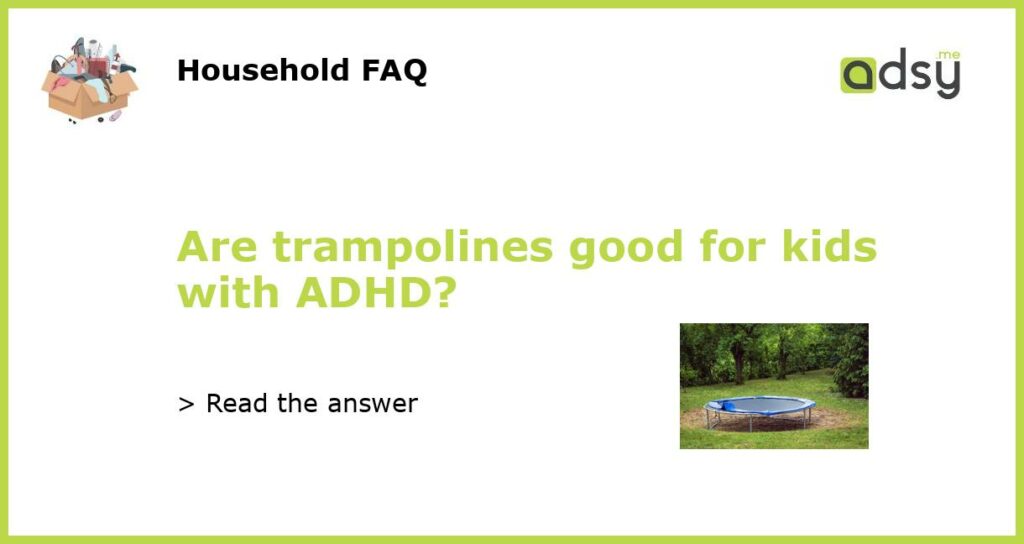Trampolines and ADHD: Can bouncing improve symptoms?
Trampolines have long been a popular backyard toy, bringing joy and laughter to children of all ages. But for parents of kids with Attention Deficit Hyperactivity Disorder (ADHD), the question arises: Are trampolines actually beneficial for children with ADHD? The answer is not a straightforward yes or no, as the impact of trampolines on ADHD symptoms varies from child to child. This article explores the potential benefits and considerations of trampolines for kids with ADHD.
Physical activity and attention
One potential benefit of trampolines for kids with ADHD lies in the physical activity they provide. Research has consistently shown that regular exercise can help improve attention and reduce symptoms of ADHD. Bouncing on a trampoline requires coordination, balance, and concentration, all of which can contribute to improved focus in children with ADHD. The repetitive, rhythmic bouncing motion can also have a calming effect, promoting relaxation and reducing hyperactivity.
Sensory integration and regulation
Kids with ADHD often struggle with sensory processing and regulation. They may have difficulties with sensory integration, leading to sensory-seeking or sensory-avoiding behaviors. Trampolines can provide sensory input through the vestibular and proprioceptive systems, helping children with ADHD better integrate sensory information and regulate their responses. The bouncing motion stimulates the vestibular system, which contributes to balance, spatial awareness, and body coordination. This input can help calm the nervous system and improve sensory processing in kids with ADHD.
Potential risks and considerations
While trampolines offer potential benefits for kids with ADHD, it is essential to consider the risks and safety precautions associated with their use. Trampolines can be dangerous if not used properly, and children with ADHD may be at a higher risk of accidents due to impulsivity and lack of focus. Adult supervision is crucial at all times when children are using a trampoline. Safety measures such as padding, netting, and keeping the trampoline away from hard surfaces should also be in place to minimize the risk of injuries.
Individual differences and preferences
Every child with ADHD is unique, and what works for one may not work for another. Some children with ADHD may find the sensory input and physical activity provided by trampolines to be highly beneficial, while others may not engage with it as much. It is essential to observe and listen to your child’s preferences and needs. If the trampoline is not enjoyable or helpful for your child, there are plenty of other physical activities that can provide similar benefits.
Consultation with healthcare professionals
Before incorporating a trampoline into your child’s routine, it is recommended to consult with healthcare professionals familiar with your child’s ADHD diagnosis. They can provide personalized guidance based on your child’s specific needs and medical history. They may also be able to recommend alternative activities or therapies that can complement the trampoline’s benefits.






